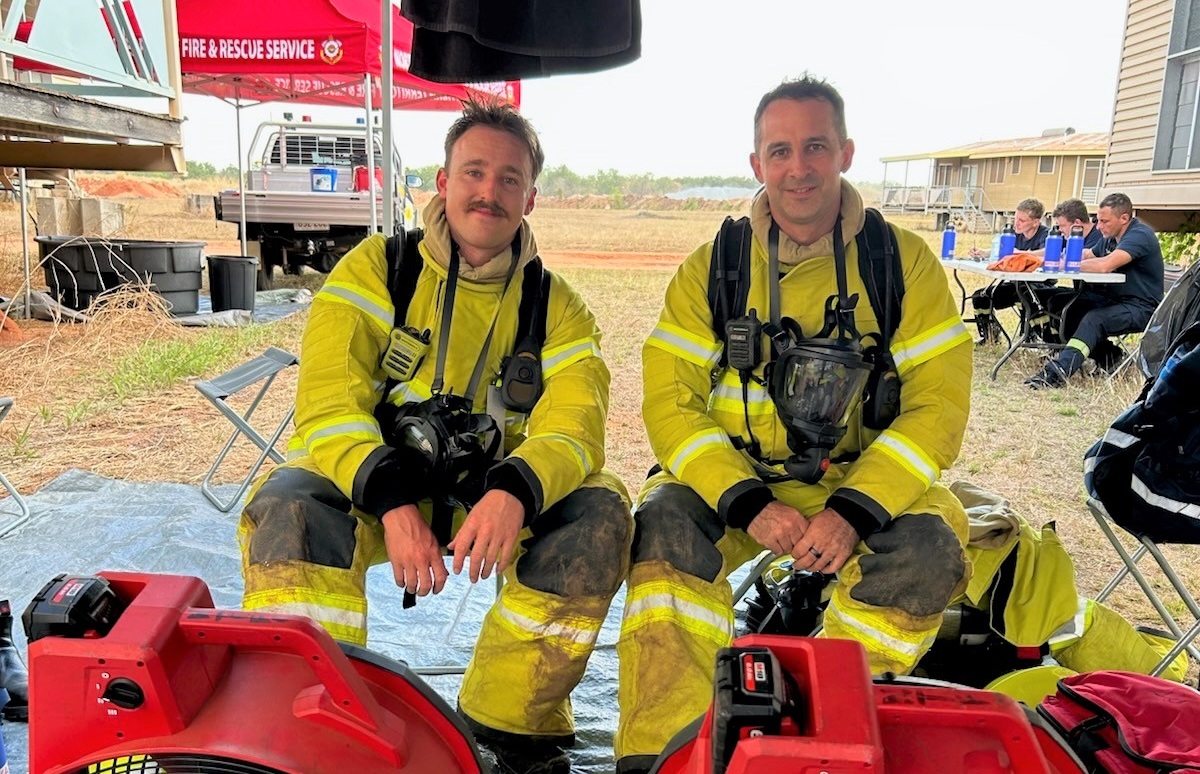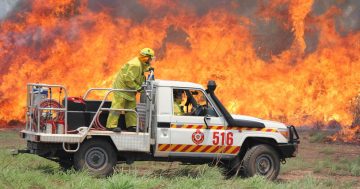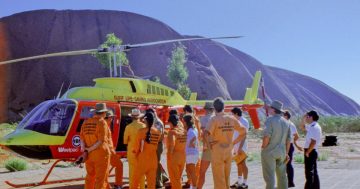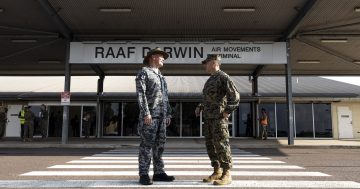
Volunteer and paid NTFRS personnel have been training with new deployable shelters and drones in preparation for the upcoming wet season. Photo: NTFRS.
The NT Fire and Rescue Service’s (NTFRS) Special Operations Command has been preparing for this year’s west season by conducting an exercise involving drones and new deployable shelters.
As part of the Territory Government’s response to floods and cyclones, the NTFRS supports the wider NT Emergency Service (NTES) during the busy season.
In particular, NTFRS members are often deployed to assess the condition of buildings and utilities before recovery and clean-up operations can commence.
To this end, Remotely Piloted Aircraft Systems (RPAS) technology – or drones – with thermal imaging to help locate survivors in debris, vegetation and floodwaters are often used to survey disaster zones.
The two-week exercise has involved installing new large rapid deployment shelters in preparation for use in regional areas. Measuring 49 sqm, the shelters can fit up to 14 people and can be used to support incident management teams (IMT), as accommodation, as medical triage stations, for logistical stations, and for community support hubs.
The shelters offer multiple power supply options for computers, TVs, communications systems and RPAS charging stations.
During the exercise, the shelters and relevant equipment will be checked and tested, while paid and volunteer crews will be rotated through for familiarisation.
NTFRS Deputy Chief Fire Officer – Strategy and Capability Stephen Hunter said the exercise was a critical part of the Northern Territory Government’s preparation for the wet season.
“I’d like to thank the National Critical Care and Trauma Response Centre, which has been instrumental in helping expand this capability,” he said.
“When the Territory is challenged by floods and cyclones, the NTFRS supports the NT Emergency Service, NT Police and other government agencies, as well as volunteers and community members on the ground during response and clean-up operations. These shelters allow us to mobilise quickly when we arrive in a disaster zone.
“The RPAS technology also allows us to detect survivors, structural damage, flood zones and blocked roads, and this information allows us to prioritise government resources urgently and effectively,” he added.
“By running this exercise, the NTFRS is in a better position to respond and support our colleagues in other agencies when we get the callup to support Territory communities.”
The preparation for the upcoming season has coincided with the 50th Anniversary of the (NTES) which was commemorated in late September with more than 80 volunteers, staff, and family members.
To mark the milestone, the NTES Darwin Volunteer Unit and Palmerston Volunteer Unit came together for a special 50th Anniversary Citation Ceremony which provided an opportunity to officially thank volunteers for their service and dedication, to showcase historical displays, and to share the achievements of NTES with family and friends.
NTES Chief Officer Wayne Snell said the ceremony was a chance to reflect on the history and the future of the service.
“In looking forward, it is important to look back and recognise those who have helped shape NTES into what it is today,” he said.
“United by the purpose of supporting their community in times of need, those who have contributed over the past 50 years have shown courage, commitment and a steadfast dedication to keeping the Northern Territory safe.
“These citation ceremonies are about acknowledging that service and honouring the tireless efforts of our volunteers.”





